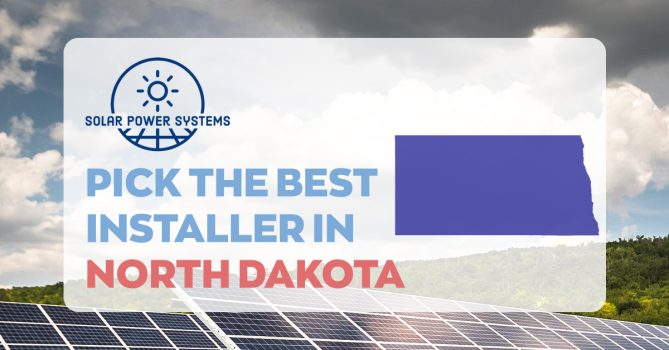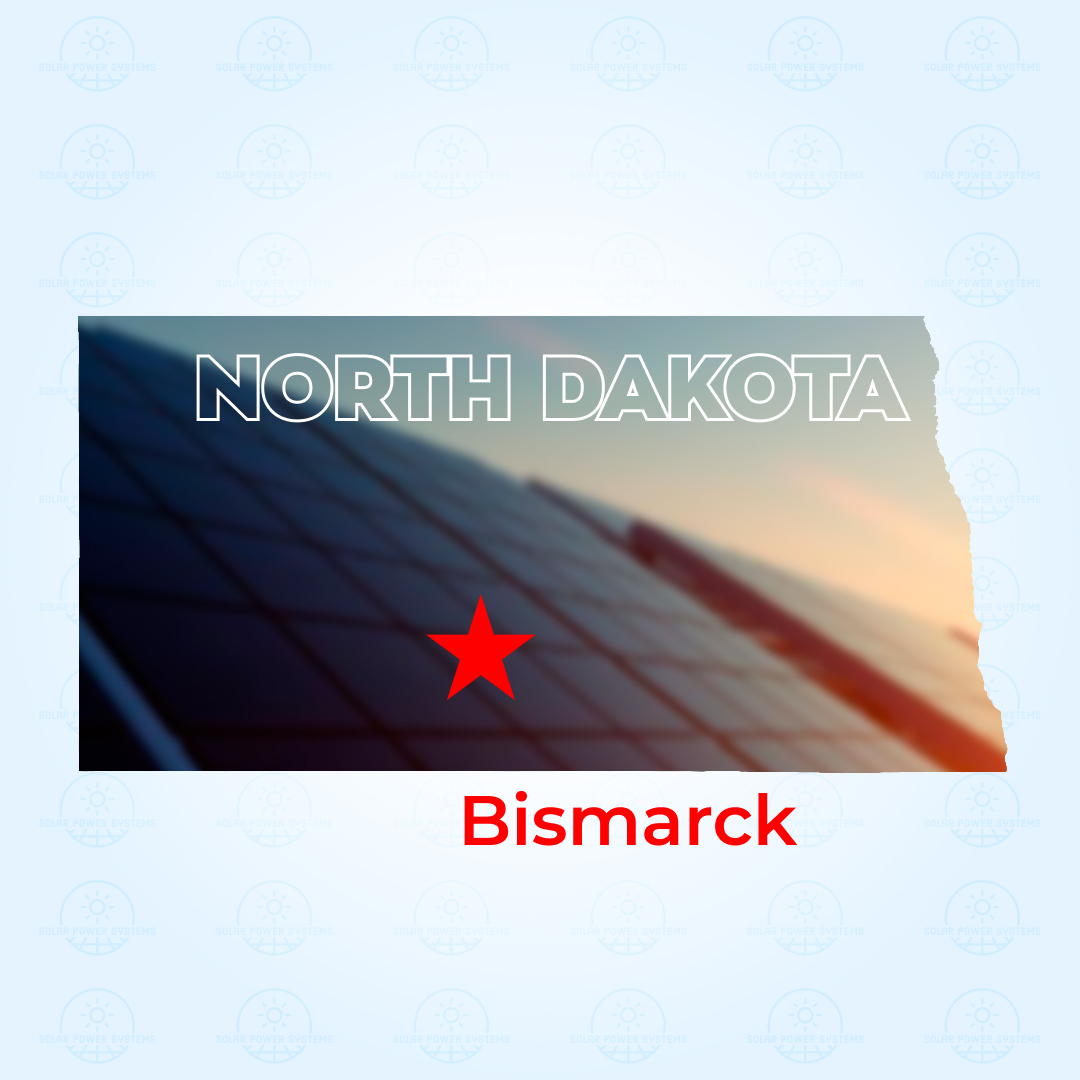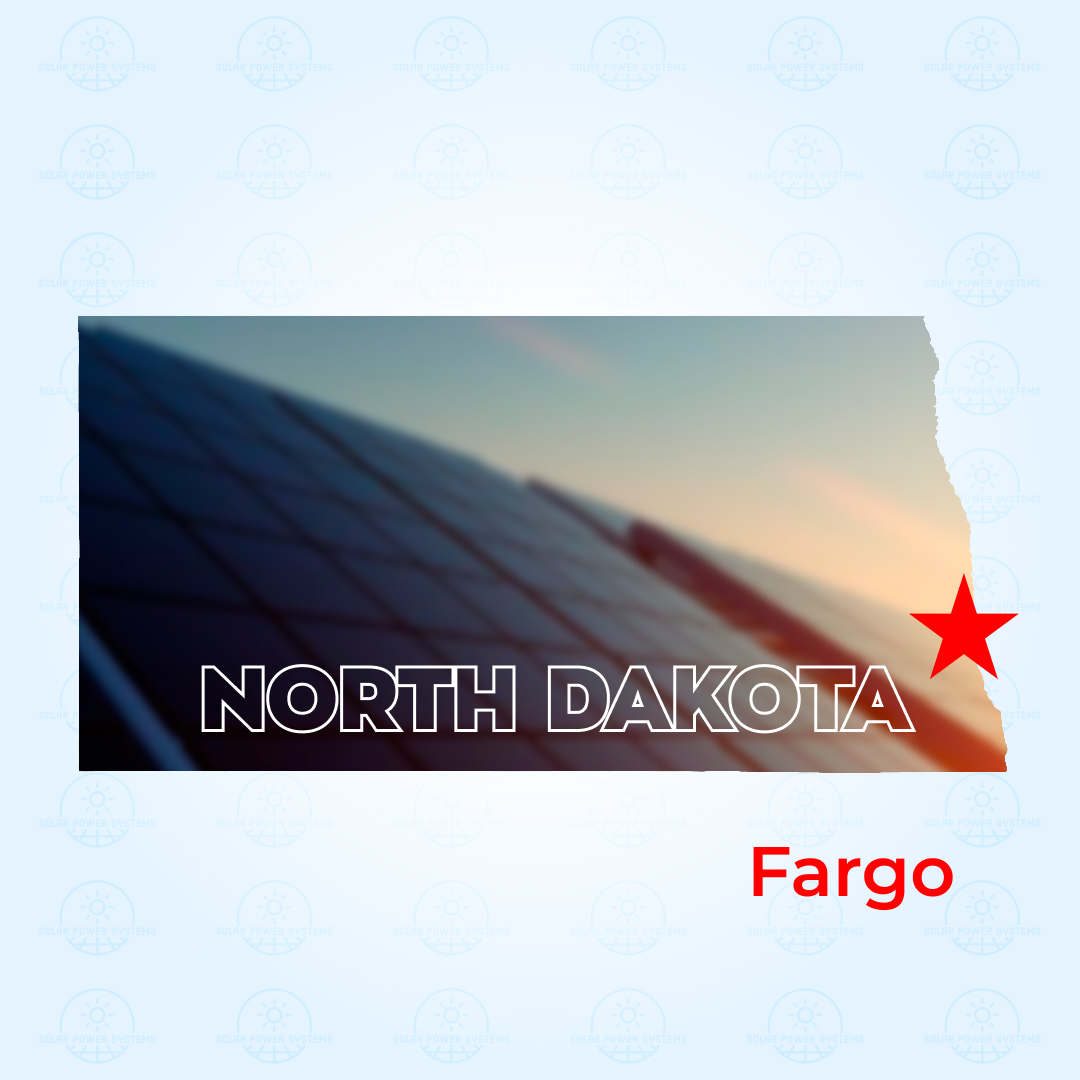Choosing the right solar installer in North Dakota can feel overwhelming. There are so many questions to answer before making the decision, you can spend hours researching. That’s why we’ve simplified it for you.
Our guide highlights North Dakota’s top-rated solar companies, combining Solar Power Systems expert insights with feedback from locals who’ve made the switch.
No need to surf the web looking for information crumbs to have the big picture. Years in business, reviews from real customers, online reputation, panel brands, warranty, social media overview, and more – we have it all. The hard work is done to help you make the right decision.
We prioritize companies committed to long-term service and reliability. Here’s our list of North Dakota’s most trusted solar installers:
Installation Prices of Solar in North Dakota
As of 2025, North Dakota has some of the best prices for solar panels in the US. People who want to switch to clean energy need to know how much solar panels cost in North Dakota. The prices below are current estimates for standard residential solar panels:
| System Size | Cost Before Incentives | Cost After 30% Federal Tax Credit |
|---|---|---|
| 5 kW | $12,349 – $16,707 | $8,644 – $11,695 |
| 6 kW | $14,819 – $20,048 | $10,373 – $14,034 |
| 7 kW | $17,289 – $23,390 | $12,102 – $16,373 |
| 8 kW | $19,759 – $26,731 | $13,831 – $18,712 |
| 9 kW | $22,228 – $30,073 | $15,560 – $21,051 |
| 10 kW | $24,698 – $33,414 | $17,289 – $23,390 |
| 11 kW | $27,168 – $36,755 | $19,018 – $25,729 |
Key Pricing Details
- Average cost per watt: $2.91 – $3.44/W (vs. national average of $3.33/W)
- Average system size: 11 kW for typical North Dakota residences
- Monthly electricity bill average: $136.38
- Average monthly usage: 1,085 kWh
The cost to install solar panels includes panels, inverters, mounting equipment, wiring, labor, permitting, and installation. Most North Dakota homes require an 11 kW system to offset average electricity use.
State Rebates and Incentives for Solar
| Incentive | Savings | Description | Eligibility |
|---|---|---|---|
| Federal Residential Clean Energy Credit (Solar Tax Credit) | 30% of system cost (approx. $4,358) | Tax credit on equipment, labor, permits, and sales tax | Cash purchase or loan required; can be rolled forward through 2035 |
| Property Tax Exemption | Yearly 0.99% of system cost | No additional property tax on home appreciation for 5 years | Automatic; contact regional tax assessor |
| Net Metering | Credit on electric bills | Sell excess solar power to utility | Available only through Xcel Energy and Otter Tail Power Company |
| Battery Storage Incentive | 30% federal tax credit | Applies to batteries of 3 kWh or larger | Requires solar system installation |
Additional Details
- Federal Residential Clean Energy Credit: The most influential incentive, covering 30% of your total solar panels prices, including labor and permits. It can be rolled over to future years if not fully used in one year.
- Property Tax Exemption: Since residential solar panels can increase property value by about 4.1%, this exemption prevents extra property taxes for five years.
- Net Metering: Lets homeowners sell excess solar power back to utilities. But not all providers have to offer retail-rate net metering.
- Battery Storage Incentive: Solar-plus-storage systems with batteries that are 3 kWh or larger get a 30% tax credit.
Special Considerations Relevant to North Dakota
Solar Irradiance and Climate
North Dakota has about 201 sunny days a year, which is close to the national average of 205. Most places can use residential solar panels because the peak sun hours are about 5 hours a day. Solar panels work better in cooler weather, even though winters are cold. Long summer days also make for high annual production.
The western part of North Dakota gets more sunlight than the eastern part. The climate of North Dakota causes solar panels to function effectively in general, but their functionality diminishes during the wintertime.
Getting Consent and Reconnecting
Installers will generally handle getting the permits to install the solar panels within North Dakota. The process of grid connection between utilities will differ, but guidelines by Xcel Energy and Otter Tail Power Company can be readily understood.
Timeline Assumptions
Investment Horizon
- Consultation and design: 1–2 weeks
- Permitting: 2–6 weeks
- Equipment procurement: 2–4 weeks
- Installation: 1–3 days
- Inspection & grid connection: 1–4 weeks
Timeline Factors
- Local office workflow and productivity
- Winter weather conditions
- Equipment availability
- Utility approval procedures
- Deteriorated roofs or reconstruction works
Having a certified installer means easier approval and less downtime.
Is Investing in Solar Worth It in North Dakota?
Saving Energy and Possible Savings
The average residential consumer in North Dakota uses about 1,085 kWh per month, higher than the national average. Average monthly electricity costs run about $136.38, so solar can offset significant bills.
Solar conversions can save households an estimated $1,636 annually. Over the lifespan of the system, this translates to an approximate $25,758 solar investment that pays off.
Payback Time and ROI
The average solar panel payback period in North Dakota is 13 years, slightly longer than the national average of 12. Payback typically ranges 10–16 years, depending on system size, cost, usage patterns, policies, and roof orientation/shading. Solar panels provide free energy for 10 to 15 years after payback.
Home Price Appreciation
Solar panels on residences add property value by 4.1%, according to Zillow. Assuming the average residential property value is $250,248, this adds roughly $10,260 in value.
Ecological Advantages
Solar panels lower fossil fuel usage, decrease emissions, and contribute to renewable energy adoption. That is why the answer to “are solar panels economical in North Dakota?” is generally affirmative.
Important Considerations Before Installation
- Roof direction (south/west preferred)
- Shading by surrounding features or trees
- Average monthly electricity usage (systems best suited to residences with 500+ kWh/month)
- Long-term tenancy (best return to owners remaining 10+ years)
Market Conditions
North Dakota’s solar market is steadily growing. Installations rose in 2024 and are expected to continue increasing as solar panel prices decline and federal tax credits remain available through 2034.
For homeowners wondering “how much do solar panels cost in North Dakota?”—the combination of low prices, federal tax credits, and long-term savings makes now a favorable time to consider solar.
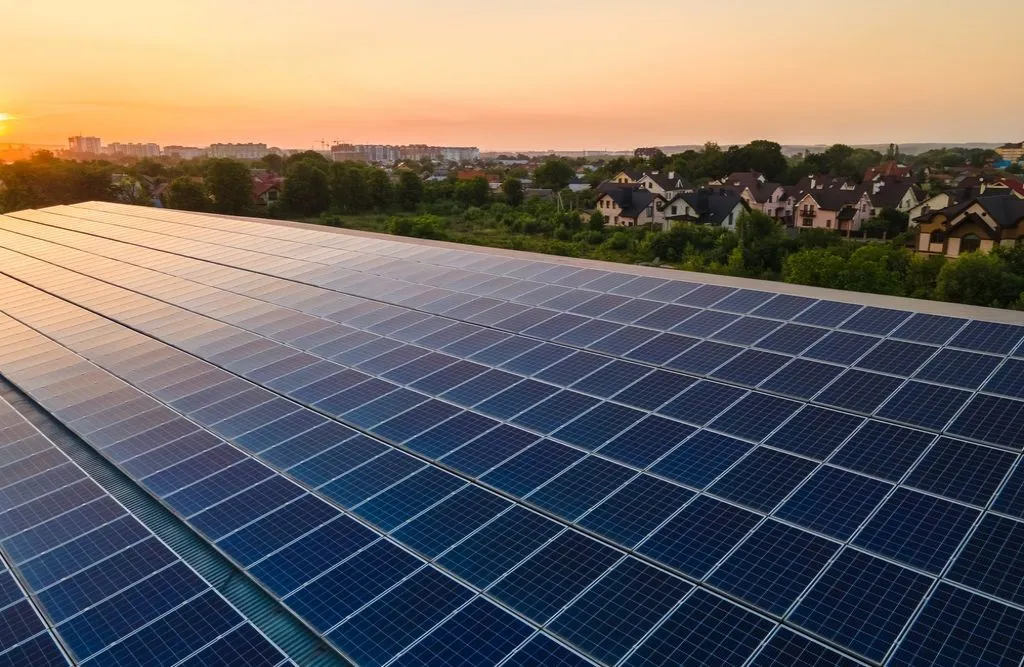
How much is your electricity bill per month?
Help us understand what you`re currently spending
Solar Financing Explained
You can pay for solar panels in a couple of ways:
- Cash
- Installer solar loans
- Personal loans
- Cash-out refinance or HELOC
- Solar Leases or Power Purchase Agreements (PPA)
First, there is a cash purchase, which in most cases provides the best price and long-term savings, but the upfront payment is not always what you can afford. If you want to own your solar panels and don’t have about $15,000 to $20,000 in the bank, you’ll have to choose solar panel financing.
You can consider a personal loan, a home equity line of credit, or a solar loan offered by the solar company. However, keep in mind that these loans come with interest and additional fees. Solar loans often are tied to dealer fees, which can increase the total cost of your solar system by 20% or more in exchange for a lower interest rate. To ensure you get the best possible deal, it is wise to compare the dealer fees and interest rates offered by different installers. This way, you can make an informed decision based on the most favorable terms available.
Some companies offer solar leases or PPAs that require zero upfront cost. But in such case, you don’t own solar panels and you are not eligible for any solar rebates or the federal tax credit. And, because you have to pay the solar company monthly, your total solar savings will be lower. Ask for detailed savings calculations from a solar installer to decide on the best option. In most cases, you will still be paying less for electricity.
Frequently Asked Questions
How We Rank Solar Installers
Our main goal is to provide homeowners like you with top-rated solar companies you can trust. Our solar experts analyzed thousands of local and nationwide installers to get to the bottom of who is best in a specific location. The solar company ranking methodology is based on gathering input from homeowner surveys, consulting with industry experts, and extensive research into the solar energy market. Here are the things we believe are the most important to consider when choosing a solar company.
In short, here’s how we pick top installers:
– Company that has been in business for over five years as it indicates stability, reliability, and successful installations.
– Local solar companies over big national ones covering multiple areas as they can provide better personal attention and know more about the solar needs and regulations in their area.
– Companies with hands-on experience and a wealth of projects under their belt are more likely to deliver efficient and timely installations that cater to specific customer needs.
– Companies that handle their own installations instead of outsourcing to subcontractors ensure a higher caliber of work and nurture a culture of excellence and accountability in service.
– Select a company that has a good overall reputation and reviews on sites like SolarReviews, BBB, Google Maps, and Yelp.
– The company is licensed and insured and holds relevant certifications such as NABCEP certification.
– Companies that offer a wide selection of high-quality solar panels and related products and work with reputable brands.
– Companies that provide flexible financing options such as solar loans, leases, or power purchase agreements.
– Installers that provide substantial workmanship warranties and system performance guarantees.
Read more:
Our Methodology
What Made Us Choose Sources for Expert Score?
How We Classify Solar Installers: What Matters Most?
What to Look for In a Solar Company
To ensure that you partner with a great provider that can meet your needs of going solar, look for the following:
– Make sure the solar installer has industry-standard certifications, such as those from the North American Board of Certified Energy Practitioners (NABCEP), indicating that they meet the gold standard in renewable energy installations. Also, verify if they are licensed, bonded, and insured for residential solar projects in your area. If subcontractors are involved, check their credentials as well.
– Prioritize installers with a proven track record in solar installations, ideally with at least 5+ years of experience. Ask about the number of systems they’ve installed and their project portfolio. A competent installer should openly discuss the solar panels, inverters, and batteries they use if they help to take advantage of local solar incentives and rebates, as well as warranty coverage specifics.
– Your installer should be forthcoming about the installation process and answer any questions you might have, like “How many solar panels will I need? Why?”, “Can you give me a detailed cost breakdown based on my energy consumption?”, “What solar panel brands do you install? Why?”, etc… They should also be transparent about their use of subcontractors, detailing their roles and how their work will be supervised.
– A preliminary evaluation of your roof’s condition is the groundwork. The installer should advise on necessary repairs to ensure it’s ready for solar panel installation and clarify responsibilities for any potential roof damage during the process. Discuss aesthetic concerns, such as the placement of solar panels around roof vents or the possibility of relocating vents for a more visually appealing setup.
– Check the installer’s reputation through online reviews and testimonials. They should be able to connect you with past customers who are willing to share their experiences. Personal recommendations from friends or neighbors who’ve gone solar can also be invaluable.
– Solar installation costs can vary widely, so obtaining multiple quotes is advisable. Experienced installers will adjust their offers to your home’s specifics—size, energy needs, etc. For an objective cost comparison, calculate the price per watt of the proposed system, giving you a standardized basis to evaluate different quotes.
Should You Choose a Local Solar Installer or a Big National Company?
Always choose a local solar company over a big national corporation. Small local companies that operate in a distinct local area are better than multi-state and national solar companies and large corporations. It’s the small local companies who get the best reviews on our website, and it’s the national multistate companies who get very poor reviews. Why so, you may ask?
Solar is a local service business, for the most part, and it is extremely difficult to run a solar company and offer good customer service to many locations from a central office.
Local ones have a community connection, they know the incentives and regulations in the area better, and they simply care more about you than large businesses trying to get into your pocket and overprice you. While multi-state solar companies might try to convince you by financial stability and “quality of installations across different locations”, try to choose a local company that meets all your criteria.
What Does a Solar Installation Look Like?
Here’s how a solar system installation will look like once the design for your solar system is approved:
– First, a solar installer should estimate your energy needs, and analyze your annual and monthly electricity consumption, which you can find on utility bills measured in kilowatt-hours (kWh). Such calculations will help to understand potential savings, payback period, and the system size you need.
– A home energy audit is something every experienced solar company would do to understand the size and output needed.
– Next question on the list: are your house’s roof conditions good enough for installation? A solar installer should carefully inspect the roof and ensure its conditions and orientation are good to go, how and where to better place solar panels and wire the system.
– Next, they will design the system and show you how it’s going to look.
You will usually need a permit to install solar panels from your local authorities, and the solar provider should handle all the paperwork.
– The entire process might take up to 3 months depending on the state and local regulations, while the system installation is usually up to 3 days (might take longer depending on roof conditions and system complexity).
– The installation crew should always clean up and remove any debris, leaving your house in good condition.
– When the system is installed, it should be checked and approved by local municipality inspection.
– If you’re connecting your system to the grid, it has to be wired to your local utility system. You’ll apply for connection through your utility company, which will also want to inspect your system to ensure it’s following utility guidelines. Some installers may help you with this step, so always ask. Once you have all the permits, your system will be up and running, powering your home with solar.

Find the Best Solar Installers Near You
Browse the Best Solar Installers in Nearby Locations

